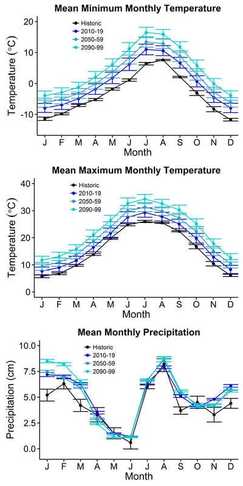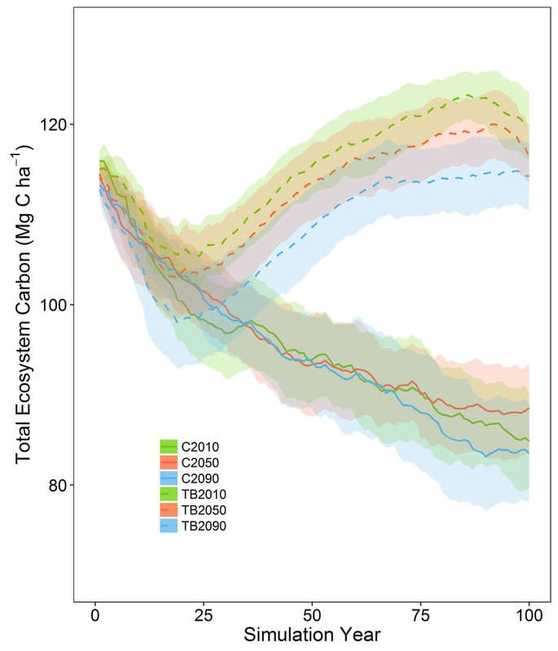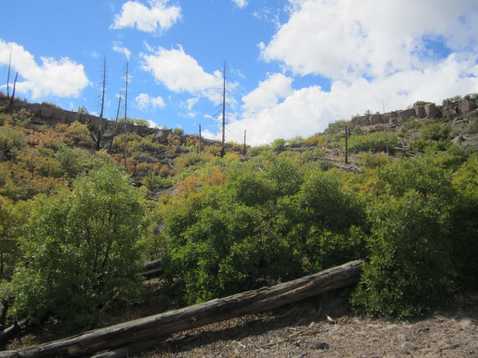 In a previous study we looked at the effects of forest treatments to restore surface fire and how they influence forest carbon storage. That study used historical climate to grow the forests, which left me wondering if how carbon dynamics and the influence of restoring surface fires might be altered by changing climate. To answer this question, I used the same forest landscape model as the previous study and obtained projected climate data from the climate models that were run in support of the IPCC’s Fifth Assessment Report. Using all of these climate projections, I developed monthly climate distributions for early, middle, and late 21st century. As the figure on the right shows, each period is progressively warmer and the amount of precipitation falling each month is quite variable. The figure below shows the influence of climate change and wildfire without treatments to restore surface fire (solid lines) and with treatments to restore surface fire (dotted lines). Without treatments, the combination of tree-killing wildfire and warmer temperatures cause the amount of carbon stored in ponderosa pine trees to decline over time. With treatments, the amount of carbon initially decreases because of the removal of trees by thinning and then increases over time. This is because fewer ponderosa pine trees are killed when wildfire occurs. The treatment simulations (dashed lines) also show how climate affects tree growth. The blue line and shaded area represents carbon under late-century climate (2090-2099) and it is significantly lower than under early-century climate (2010-2019). Interestingly, the results from simulations that don’t include treatments are heavily influenced by a large increase in Gambel oak. This species can resprout after fire and provide a fuel source to carry a subsequent fire before the pine trees are large enough to withstand fire. As shown in the photos below, this is an outcome that we are already seeing in the southwestern US following large, hot wildfires. The results from this study suggest that by restoring natural fires to this ponderosa pine forest, we can maintain a pine forest for a longer period of time under changing climate.
0 Comments
Your comment will be posted after it is approved.
Leave a Reply. |
Details
Archives
October 2023
Categories
All
|



 RSS Feed
RSS Feed